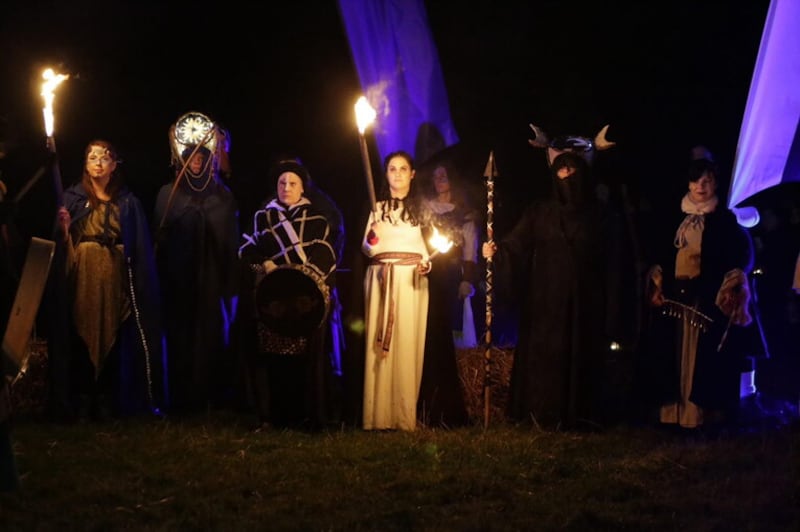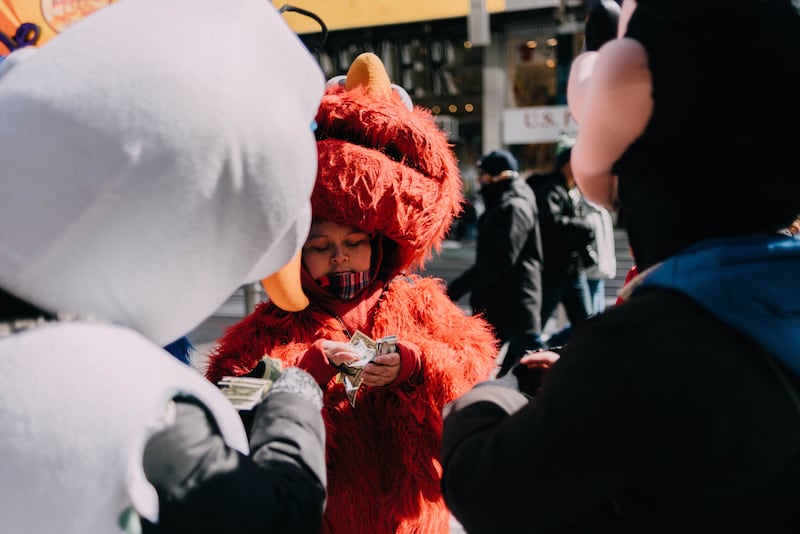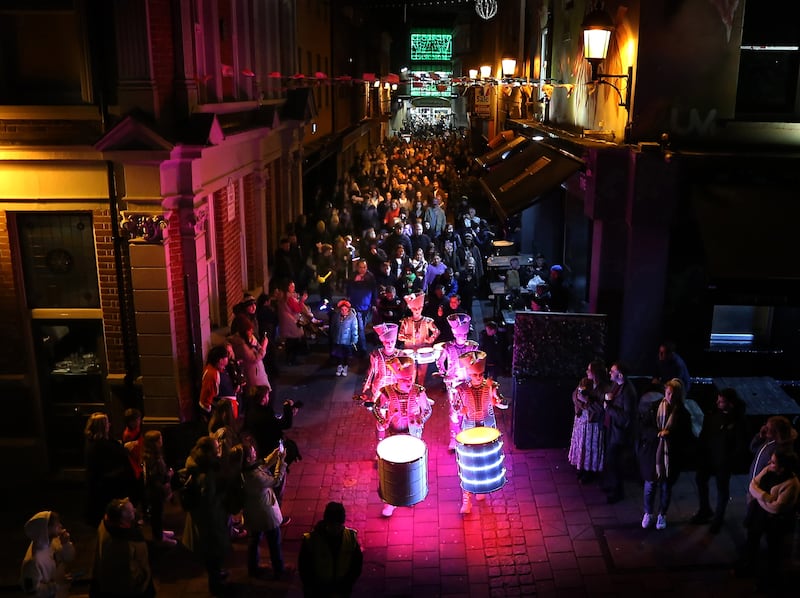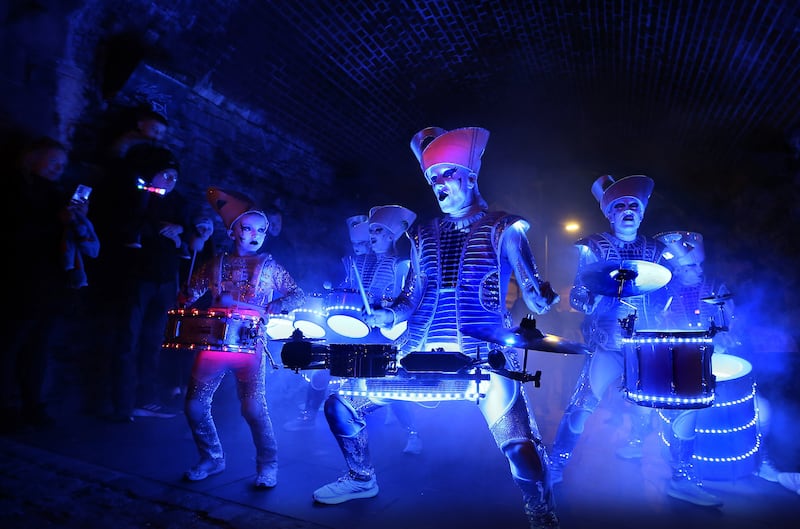The origins of Halloween lie deeply rooted in the ancient Celtic festival of Samhain. Emerging in Ireland as a marker of the changing seasons, it signaled the transition from the bountiful harvest season to the shroud of the darker winter months.
Origins of Samhain
The modern Halloween tradition of dressing up as horror movie villains like Michael Myers or Jason Voorhees emerged from the ancient Celtic festival of Samhain.

This was celebrated in Ireland to mark the end of the harvest season and beginning of the darker winter months.
Samhain was considered a liminal time when the veil between the natural world and the spirit world was at its thinnest.
During this time, it was believed that spirits could easily cross over into the realm of the living.
The ancient Celts held huge communal bonfires and people wore costumes and masks to disguise themselves and ward off harmful spirits roaming the earth.
Read More :
- King and Queen given spooky transformation as part of Halloween postbox topper
- Lynette Fay: I'm here for the pumpkins and Derry-inspired fun this Halloween – trying to carve would a turnip would be far too scary...
- Derry Halloween: 'Spine-tingling' start to celebrations as Europe's largest Halloween festival returns
Food offerings were left outside homes to appease the aos sí (a supernatural race comparable to fairies) and other spirits.
Samhain was seen as a time when the cycle of the year shifted, and the Celtic new year began with the onset of winter.
The ancient festival included rituals to honor and communicate with ancestors who had passed away.
Evolution of Samhain into Halloween
When Christianity began to spread throughout Ireland in the early medieval period, the Catholic Church incorporated the honouring of the dead into the Christian calendar.
All Saints Day or All Hallows Day was set on November 1st and All Souls Day on November 2nd.
The evening before All Saints Day became known as All Hallows Eve and later Halloween.
Just as Samhain marked the "dying" of the year, these Allhallowtide celebrations marked the end of the harvest season in autumn.
Over time, the folk customs of Ireland's ancient Samhain intertwined with the church's Allhallowtide celebrations.
Aspects of Samhain survived through the centuries and became part of the Halloween tradition.
Immigration brings Halloween to America
Irish immigrants fleeing the potato famine in the 19th century brought their Halloween folk customs and traditions to America. While some immigrants celebrated purely for fun, others continued rituals such as leaving food out for spirits and honoring dead relatives.
By the early 20th century, Halloween in America expanded into a popular secular holiday incorporating dressing up, parties, parades, community events, and trick-or-treating.

Halloween was further commercialized in America and gradually spread back to Europe.
Ancient traditions preserved
While Halloween today is celebrated in Ireland much like the US, some practices harken back to ancient Samhain.
These include lighting bonfires, baking a barmbrack cake with symbolic trinkets inside, apple bobbing, and various divination rituals around relationships, death, and the future.
Eating colcannon, a potato and kale dish is also a unique tradition. Irish families traditionally hide coins or rings in children's portions.
If a child finds a coin, they keep it for good luck. But if they discover a ring, legend says they'll be married within the year. This folk ritual transforms a simple meal into a fortune-telling game predicting the future.
Food offerings may still be left on doorsteps or underneath trees to appease fairies and spirits. Ancient sites like the Hill of Ward in County Meath are still associated with Samhain rituals.
Festivals and celebrations
Modern Halloween is largely about celebration, food, and fun for the family in Ireland.
Púca Festival in County Meath incorporates Ireland's folklore and history with music, theatre, food, and bonfires.
Europe's largest Halloween gathering is in Derry with huge costume parades and events in the walled city.

The Derry Halloween event spans four days, drawing more than 100,000 attendees from across the globe annually.


Throughout the festival, the city undergoes a haunting metamorphosis, featuring ghost tours, eerie residences, a grand carnival procession, and a spectacular fireworks show.
A significant highlight of the event is the "Awakening the Walled City Trail," guiding visitors through a chilling expedition across the City of Bones.
Dublin hosts a major parade and the Bram Stoker Festival celebrating the Irish author who created Dracula.
Dubbed the "Gate to Hell," the cave of Uaimh na gCat in County Roscommon is intrinsically linked to the pagan festival of Samhain.
From October 23rd to November 3rd, the Rathcroghan Visitor Centre offers guided tours of this cave said to be a portal to the underworld.
A lot more ghost tours and haunted walks are popular with adults throughout Ireland.








